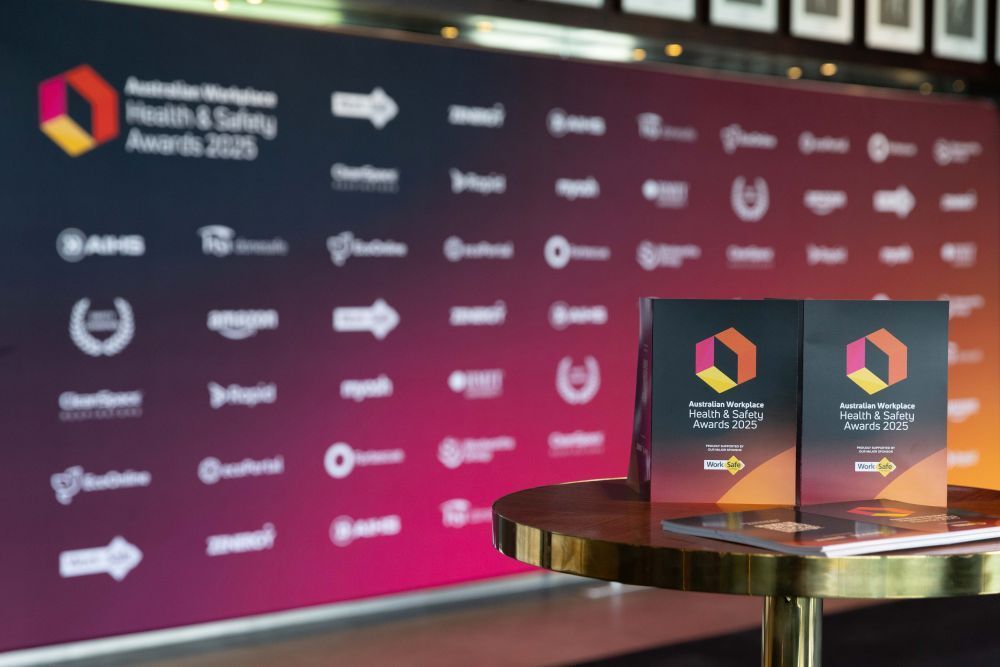Zenergy WHS Insight Series – Kurt Warren, Hansen Yuncken
Interview with Kurt Warren, National HSE & Quality Manager at Hansen Yuncken, by Jacqueline Batterham

Louise is currently Executive Director Safety for Transport for NSW. This is a recent move for Louise commencing in Jan 2021, previous to this Louise was the Head of Health and Safety for Sydney Metro. Louise is known as a commercially focused and people orientated leader, where she has covered a diverse portfolio of industries representing leading brands in both the public and private sector. She has an eye for numbers and enjoys challenging the status quo. Louise is a strong advocate for diversity and inclusion and strives to empower and support people to unlock their full potential.
Kurt, great to sit down today, it’s been a busy start to 2021 and we appreciate you taking the time out to share your views with our readers. To get started, can you tell us a bit about your background and your journey so far?
I started my working career at the tender age of 15 in a small engineering company as an apprentice Toolmaker. I learnt all about hard work, and nothing about safety because unfortunately it was almost as if the word did not exist. When I finished my apprenticeship, I moved on to ANSTO, Australia’s only nuclear reactor. To say the pendulum swung in the opposite direction for safety is an understatement. This was the beginning of my safety career and passion for this profession that is now in its 21st year. Those years have taken me into safety leadership roles at Qantas, Australian Army, Ausgrid, Veolia, Laing O’Rourke and now with Hansen Yuncken as the National HSEQ Manager. I completed a Diploma of Business, Master of Science (OHS) and have started my Doctor of Business Administration (DBA). I supported my peers and profession as the NSW Vice President of the Australian Institute of Health & Safety (AIHS) and continue too as a member. I have learnt so much, grown personally and professionally, forged lifelong friendships and are forever grateful for the opportunities afforded to me in exchange for my hard work. I’m an advocate of risk management and doing safety differently with the people who interact with risk.
Long term organisational WHS strategy
You are currently 2 years through taking the organisation on a 3-year WHS strategy. Where do you start and what is involved in the creation and implementation phase?
When I first meet with our CEO about coming on board with Hansen Yuncken, he said to me “we are ready for our next step in HSEQ, but I don’t want to do it with more procedures, checklists and audits. I want to do it with our people, and we are looking for someone that can help us with that”. I was instantly drawn on the possibilities of strong people leadership, culture and challenging the status quo.
Wind forward into my second month in the role and I was asked by the Board to share my thoughts on HSEQ in the business. Respectfully, I declined because I didn’t know the organisation. However, I do know who does, our people. What proceeded was three simple questions that I personally asked from shop floor to boardroom as I travelled around the business over the next two months. What should we Stop, Start and Continue to do? Anonymity was guaranteed, trust was needed, and the context was open and informal. Sometimes it was with groups of people, other times it was with individuals. The result was a rich qualitative insight into the heartbeat of Hansen Yuncken in all its glory, challenges and strengths. We shared the verbatim insights via an online collaboration tool with our people and leadership team that ultimately set the scene for greater curiosity, discussions and ideas being generated by our people. Our people developed and set our new principles of how work would be done, and the strategy was informed by 70% worker generated ideas, 20% business requirements and 10% directly from assurance activity. Our principles of work:
Looking to the future
How do you see things developing over the next 5 years in our industry?
Well, we can guarantee it will evolve as it has done for decades and centuries before. The global pandemic has certainly accelerated changes in how work is done and strengthened discussion on mental health and the need for work life balance. Technology will deliver us smart solutions; big data and the speed of change will continue to accelerate and the need for business, work and people to evolve with it sooner than we are accustom too.
At Hansen Yuncken we are currently participating with several other organisations and industry partners on alternative ways of measuring safety performance through the six elements of Due Diligence under the WHS Act. Below is our internal Hansen Yuncken way of considering the traditional, alternative and future measures that may inform what our partners are calling the Due Diligence Index – Safety.
I’m hopeful through this structured broader collaboration of industry partnerships we could finally offer to our peers a complementary subset of measures for safety performance to inform decision making.
Collaborating
What are some wins you have had from collaboration? Do you think we do it well as an industry?
My time in the Army taught me that what seems unachievable is achievable when a team is in step together. Throughout my career I have achieved very little when I go it alone. And the success and results have come from great collaborations internally and externally from the organisations where I have worked.
I think our industry collaborates well as likeminded individuals; however, I think supporting diversity through non-traditional pathways into safety roles, qualifications and backgrounds would add to the dynamic.
Advice
You have held senior positions across a diverse range of sectors, what advice do you have for people wanting to join the safety industry and in particular high risk?
A few points:
• Expose yourself to as many different sectors of high risk as possible. The principles of how we apply our trade as safety professionals is fundamentally the same, however the context of different sectors, its people and culture will continue to provide you development opportunities. Get out of you comfort zone, it’s worth it!!!
• Work hard to walk away learning something new from an interaction with someone who performs high risk work. It shapes your curiosity, builds trust and feels genuine for both involved
• The business is not safety, recognise that we support the core business and those that do the high-risk work






